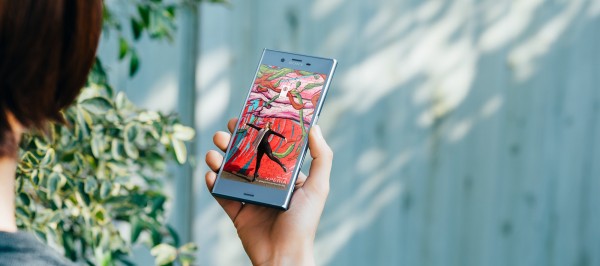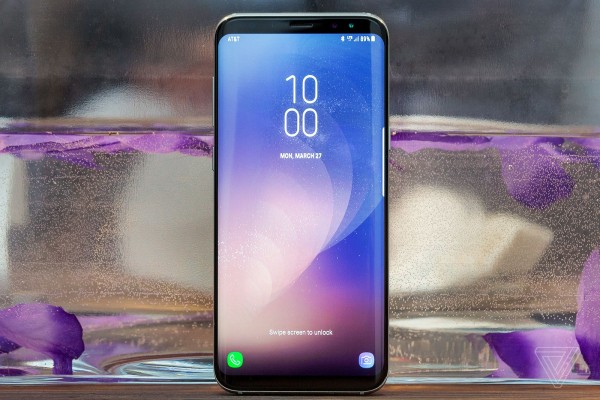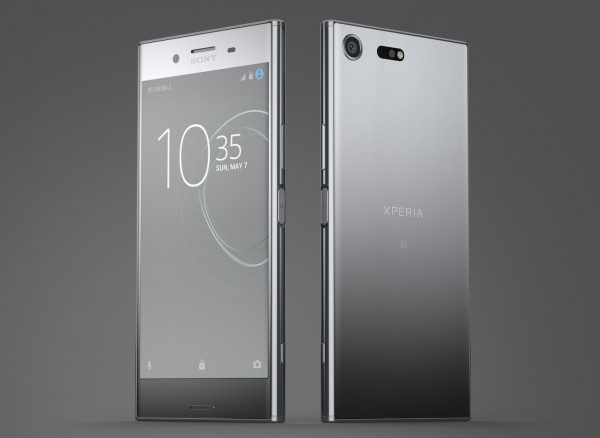
I’m not sure I fully buy into this premise yet, but I see where Thomas Ricker from The Verge is going with this.
How’s it possible that Sony’s lovely $700 Xperia XZs, a phone that’s going on sale today, already looks dated? That’s the question I was asking myself yesterday while staring at the image above. Then it dawned on me: the sensor-laden forehead and chubby chin of the XZs already looks retro.
In April of 2017 we’ve seen very modern edge-to-edge displays on the Galaxy S8, LG’s G6, and even on the teaser pic for the Essential phone from Andy Rubin’s new venture. And those all came after Xiaomi released the Mi Mix back in October. Here, have a look at these beauties and try not to swoon:
And what is it that they have in common? A bezel-free phone.

One of the biggest problems Sony’s faced with its mobile division outside of the typical stuff like marketing and partners has been design. While others have been evolving their design aesthetics, even if it’s ever so gradual or not in the case with a bezel free design like that pictured above on the Galaxy S8, Xperia phones for the past few years have remained fairly stagnant. It’s worth pointing out that I’m not a big believer in redesigning a phone for the sake of a redesign. Instead, I’m all for gradual refinements like you see in a Porsche 911 that has slowly evolved over the years versus one radical shift to another every couple of years for the sake of change.
That aside, we live in a post-PC world where no one is going to compare the tech specs of the XZs (pictured in the header) or Xperia XZ Premium (pictured below) against other available phones and choose a victor. Instead, when we’re strolling down the aisle at a store or browsing online, we are presented with a few stock images of a device and currently compared to peers, the new Xperias can look dated. None of that means they’re a lesser phone, nor does that mean that once the phone is home, that you won’t appreciate all of its beauty, instead of the cheap plastic Samsung tends to offer.
Stretching that display across a handset isn’t just more beautiful, it’s also functional. People buy large phones primarily to have large displays. Going edge-to-edge gives consumers what they want in an elegant phone that can fit more easily in the hand. But doing so requires a reengineering of components like the earpiece speaker, home button, fingerprint sensor, and proximity sensor which is helping to push innovation forward.

Another challenge for Sony is if they can even afford to adopt a bezel-free design and other advancements at the pace of its competitors. It’s basic business that a bezel-free design will cost far more today than it will two years from now when component and manufacturing costs associated with it have decreased. For Sony who does such low volumes of phones, the R&D put into transitioning into a bezel-free design or other tech like Force Touch found on iPhone surely outweigh any return they’re going to see from adopting it.
As a refresher, Mobile posted profits just shy of $200 million in Q3 FY16, a far cry from the investment required to bring on major new tech designs and advancements.
Apple, Samsung, and others employ Force Touch-like tech that uses localized haptic feedback beneath the glass to emulate a home button. And Synaptics is developing a fingerprint sensor that can be built directly into the display. There are still trade-offs, of course: front-facing cameras remain a challenge, and Samsung had to put the fingerprint sensor on the back of the Galaxy S8 because Synaptics wasn’t quite there.
Consumers see the above tech and think delight – manufacturers see them and think costs. As is with all technology, new advancements are first found in flagship devices and then trickle down to other phones. For Sony who only managed to sell around 20 million phones in 2016, this becomes a major hurdle to cross, seeing how flagship devices only make up a portion of those sales, making it hard to spread the cost among units sold. Even in a hypothetical scenario where 75% of their phones sold were flagship devices like the then Xperia X Performance and now XZs, and XZ Premium, the costs associated with a bezel-free phone or advancements like Force Touch would either ensure each phone is priced well above $1,000 or Sony would find itself losing money again. In short, such low volumes make it impossible for them to recoup the investments required.
With Sony admitting defeat in mobile, I wouldn’t be surprised if such advancements don’t make it to Xperia phones for the reasons I listed above until they come down in cost, at which point, they’ll be the norm, instead of a differentiator.
We’re only a quarter of the way through 2017 and already large bezels have become glaring aesthetic blemishes, akin to 3D icons on flat OSes, VGA ports on laptops, and prominent 30-pin Apple connectors found on every hotel’s clock radio.
I’d also add headphone jacks to that list. Samsung was just too much of a coward to also remove the port, seeing the mess they had with the Note S7 last year and so they played it as safe as possible.

You must be logged in to post a comment.